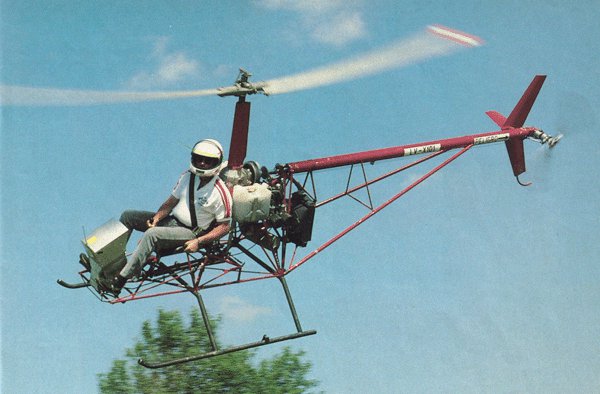| Picture |

|
| Manufacturer |
Cicare
|
| Type |
CH-6
|
| Introduced |
6/1/1987
|
| In production? |
No
|
| Units produced |
1
|
| Price US $ |
0.00
|
| Overall Length |
23.46 ft
|
| Length |
17.88 ft
|
| Height |
5.25 ft
|
| Width |
5.25 ft
|
| |
|
| |
|
| Description |
This ultra light helicopter is based on the work of the Argentina engineer and inventor Agusto Cicaré. He already designed his first helicopter (CH-1) way back in 1958 which also was the first helicopter developed in South America. In 1964 he flew his second design, the CH-2. And in 1973, the CH-3 prototype was realised. This project was financed by the Argentina Air Force and private investors. However, the Air Force stepped back and Agusto Cicaré had to finsih the machine all by himself.
In the early 1980s, he designed the CH-4 which now is well known by kit builders. During 1986 he build the less familiar CH-5 model this time again on behalf of the Argentina Air Force again.
Seven years later (1987), the ultra light CH-6 saw the light of day. This helicopter resembles the CH-4 a lot. However, this time a Rotax engine is used and the blades are made of modern composites. Also a patented command system is used. It turned out that this flying machine had suburb flying characteristics.
|
| Advertisement |
|
| Design features |
- Skid type landing gear
- Steel tube frame
- Shaft driven tail rotor
- Tubular tail boom
- Single ignition, two stroke piston engine
- Composite main rotor blades
- Metallic tail rotor blades
- Cyclic control rods run through the main shaft
|
This ultra light helicopter is based on the work of the Argentina engineer and inventor Agusto Cicaré. He already designed his first helicopter (CH-1) way back in 1958 which also was the first helicopter developed in South America. In 1964 he flew his second design, the CH-2. And in 1973, the CH-3 prototype was realised. This project was financed by the Argentina Air Force and private investors. However, the Air Force stepped back and Agusto Cicaré had to finsih the machine all by himself.
In the early 1980s, he designed the CH-4 which now is well known by kit builders. During 1986 he build the less familiar CH-5 model this time again on behalf of the Argentina Air Force again.
Seven years later (1987), the ultra light CH-6 saw the light of day. This helicopter resembles the CH-4 a lot. However, this time a Rotax engine is used and the blades are made of modern composites. Also a patented command system is used. It turned out that this flying machine had suburb flying characteristics.
|
|
- Advertisement -
|
Design features:
- Skid type landing gear
- Steel tube frame
- Shaft driven tail rotor
- Tubular tail boom
- Single ignition, two stroke piston engine
- Composite main rotor blades
- Metallic tail rotor blades
- Cyclic control rods run through the main shaft
|
| Persons |
1
|
| Max. Range |
205 mi
|
| Cruise Speed |
68 mph
|
| Max. Speed |
87 mph
|
| Max. rate of Climb |
1378 ft/min
|
| HOGE ceiling |
0 ft
|
| Service Ceiling |
11483 ft
|
| Gross Weight |
683 lb
|
| Empty Weigt |
375 lb
|
| Useful Load |
308 lb
|
| Fuel Capacity |
0 gallons
|
| Number of Engines |
1
|
| Engine Type |
Piston
|
| Engine Code |
Rotax 582
|
| Horse Power |
64
|
| Rotorhead |
Teetering
|
| Number of rotorblades |
2
|
| Rotor Diameter |
19.66 ft
|
| Number of tail rotorblades |
2
|
| Tailrotor Diameter |
3.61 ft
|
|